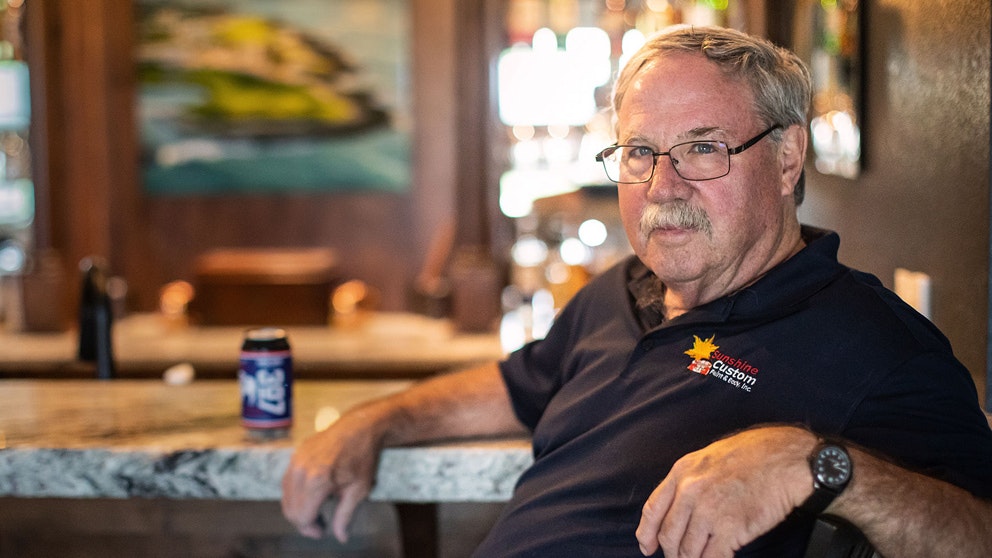Living the RV life in Wyoming is 90 percent gratifying and 10 percent terrifying.
For example, there we were driving our 34,000-pound, 40-foot long motorhome (towing a car) down the steep mountain pass above Buffalo when we encountered dozens of bicyclists having some kind of rally. We were all headed to Buffalo at different speeds.
This happened in July, 2017, but it is still vivid in my memory. I was going as slow as I could, using my “jake brakes” (an engine braking system used by big rigs and big RVs) to hover about 40 miles per hour while dodging bicyclists.
The road was wide, traffic was generally pretty light, and the weather was perfect. There was room for all of us but that did not make the experience less white-knuckled to this driver.
We made it to Buffalo safely with nary a dead bicyclist along the road, but whew! That situation sort of sneaked up on me.
That Wyoming Wind
Another time we drove our motorhome from western Iowa to Cheyenne on Interstate 80 in August, 2013. The wind was howling but it was a steady southwest wind so, except for causing my gas mileage to plummet, the trip was fairly routine.
When we got to Cheyenne, the wind gusts were over 60 mph and when we turned south on Interstate 25 to go to the Terry Bison Ranch, we were almost blown over.
There were semi-trucks on their sides along the way. We cautiously crept into our spot at the RV park and were stranded there for three days. The winds were relentless. Even a heavy rig like mine is vulnerable because it stands 13 feet high.
Finally, I worked up enough nerve to take off about 5 a.m. and head north on Interstate 25 and finally turn west at Douglas.
We made it home to Lander shaken but safe. There were lots of semi-trucks on their sides along that route, too, which can be the most-windy in the state.
South Pass outside of Lander was always daunting for me as we would take that route when we spent some winter time in Las Vegas.
I always said the most dangerous part of that 700-mile motorhome trip was the first 30 miles over that darned pass.
Yellowstone Park
We never did stay in Yellowstone but spent some wonderful times at RV parks in the Wapiti Valley west of Cody and in Jackson Hole west of the Hatchett Resort.
No conversation about RVing in Wyoming is complete without Yellowstone. It’s the crown jewel and one of the best (and trickiest) places to drive a big RV. Roads through the park are narrow, winding, and often packed with tourists who brake suddenly for bison and bears.
Parking a large rig at popular sites like Grand Prismatic Spring is nearly impossible. My strategy has always been to camp just outside the park, then explore by tow vehicle.
Inside Yellowstone, campgrounds like Fishing Bridge can accommodate large RVs, but reservations fill fast. Be bear-aware, pack layers (even in July), and be ready for unpredictable weather, including snow in summer.
Highway 287
U.S. Highway 287 from Rawlins to Lander, and then on to Dubois and Moran Junction, is one of my favorites and one of the most beautiful drives in Wyoming -- but not the easiest in a big RV.
The road curves through canyons, climbs into high alpine forest, and offers views that could cause distracted driving. There are long stretches with limited fuel, no cell service, and sparse guardrails. Even in summer, though, traffic is often light, especially early in the mornings.
Approaching the Tetons, the road gets interesting as the elevation increases. Your engine will work harder, and your brakes will heat up on the way down. Use low gears and engine braking.
The payoff? Togwotee Pass views of snowcapped peaks, wild rivers, and some of the finest RV camping in the state. The drive into Grand Teton National Park is magic, especially at sunrise.
In the southern part of the state at Rock Springs, we always liked how U.S. 191 runs to Flaming Gorge.
This area is remote, quiet, and scenic—with steep grades and hairpin turns that demand attention. It’s a lesser-known gem, but it requires careful driving.
Weather And Wildlife
The weather in Wyoming can change fast. A sunny day can become a blizzard in an hour. Always check forecasts and be prepared to pull over and wait it out. Elevation plays a major role—what’s warm in Casper might be freezing on Togwotee.
Wildlife is everywhere. Bison, elk, moose, deer, antelope, and even bears share the road. Drive cautiously, especially at dawn and dusk. Hitting a deer in a small car is bad enough -- in a 40-foot RV, it’s dangerous and expensive.
Driving a big RV through Wyoming also teaches patience. Gas stations sometime close early in small towns. Cell signals can be a luxury, not a guarantee. But that’s also what makes it special. You’re self-reliant, unplugged, and surrounded by a kind of solitude that’s rare in our noisy world
Why Wyoming?
Why drive a big RV in Wyoming? Because the Cowboy State is real. The land hasn’t been paved over or polished for tourists. You’re driving into a landscape that still moves with wildlife, and wide-open freedom.
Whether you’re parked on a Pinedale bluff above the Wind River Range, camped beside a trout stream near Saratoga, or rolling down an empty road toward Devils Tower, Wyoming has a way of making your RV feel like a frontier cabin.
It’s like you have your home on your back through the last best places of the West.
So, take your time. Let the wind blow and the antelope roam. Wyoming is open for business -- and your RV is the perfect way to meet it.
Bill Sniffin can be reached at: Bill@CowboyStateDaily.com





